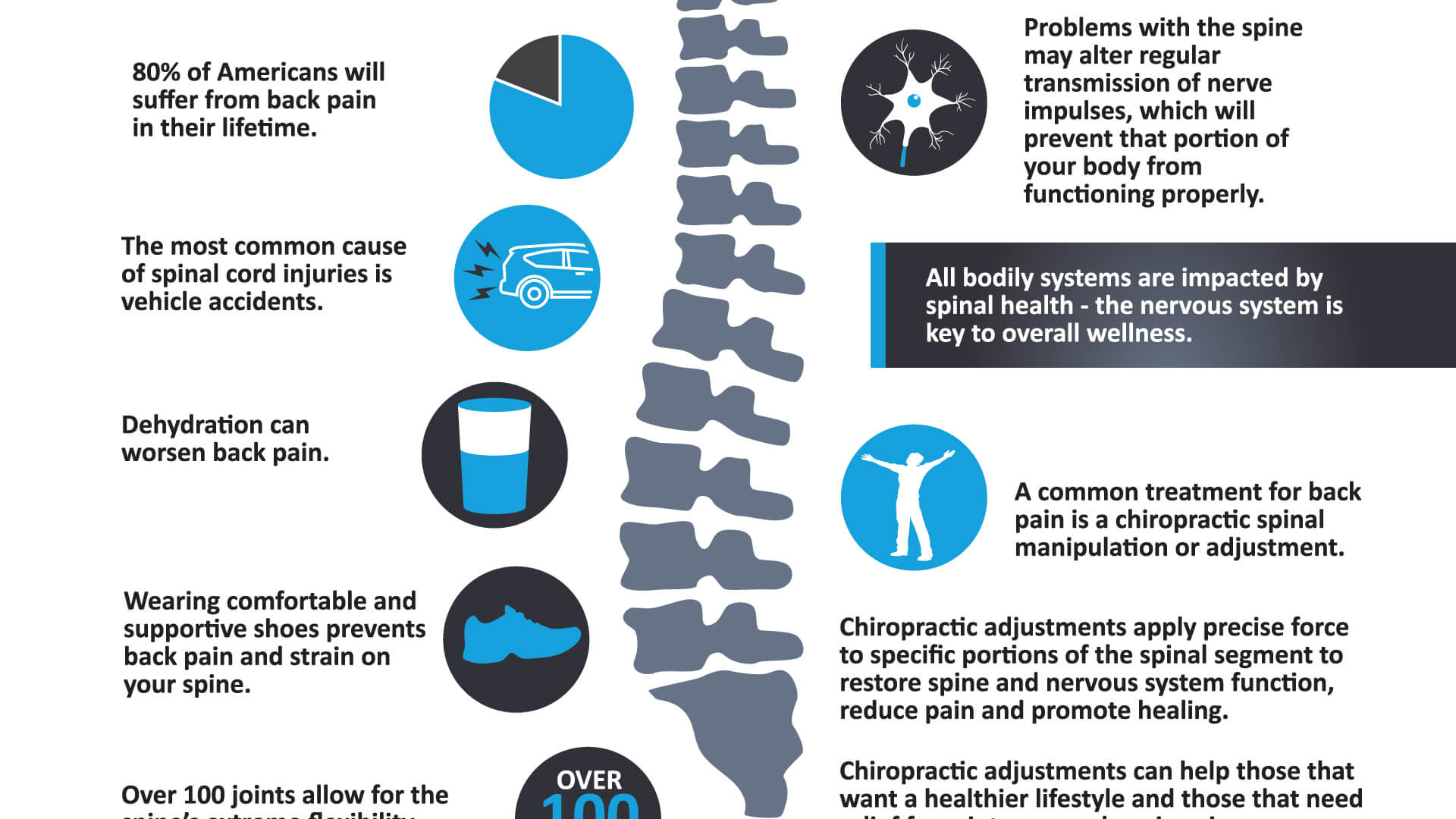Daily Practices That Result In Pain In The Back And Techniques For Prevention
Daily Practices That Result In Pain In The Back And Techniques For Prevention
Blog Article
Web Content By-Briggs Harper
Keeping proper position and staying clear of typical challenges in everyday activities can dramatically influence your back health and wellness. From just how you rest at your workdesk to just how you raise heavy items, little changes can make a big distinction. Imagine a day without the nagging back pain that hinders your every action; the remedy could be less complex than you think. By making a few tweaks to your daily routines, you could be on your method to a pain-free existence.
Poor Position and Sedentary Way Of Living
Poor stance and a sedentary lifestyle are 2 significant factors to neck and back pain. When you slouch or inkling over while resting or standing, you placed unnecessary strain on your back muscles and spinal column. This can bring about muscular tissue inequalities, stress, and eventually, persistent pain in the back. Additionally, sitting for long periods without breaks or physical activity can damage your back muscle mass and bring about stiffness and discomfort.
To fight poor stance, make a conscious initiative to sit and stand up right with your shoulders back and straightened with your ears. Bear in mind to keep your feet level on the ground and stay clear of crossing your legs for extensive periods.
Integrating normal extending and enhancing exercises into your day-to-day regimen can also help enhance your posture and alleviate neck and back pain connected with a sedentary lifestyle.
Incorrect Lifting Techniques
Improper training strategies can significantly contribute to neck and back pain and injuries. When you lift hefty objects, remember to bend your knees and utilize your legs to lift, as opposed to depending on your back muscles. Prevent twisting your body while training and keep the things near to your body to reduce stress on your back. It's essential to keep a straight back and prevent rounding your shoulders while lifting to stop unnecessary pressure on your spinal column.
Constantly analyze the weight of the object before raising it. If it's too heavy, request for aid or use devices like a dolly or cart to deliver it safely.
Bear in mind to take breaks during raising jobs to provide your back muscles a chance to relax and avoid overexertion. By executing appropriate training strategies, you can stop pain in the back and reduce the threat of injuries, ensuring your back stays healthy and balanced and strong for the long term.
Absence of Normal Exercise and Stretching
An inactive way of living lacking regular workout and stretching can substantially add to pain in the back and pain. When cupping new york ny don't take part in physical activity, your muscle mass end up being weak and stringent, leading to bad pose and raised pressure on your back. Regular exercise assists reinforce the muscles that sustain your spine, improving stability and lowering the danger of back pain. Integrating stretching right into your routine can likewise boost flexibility, protecting against rigidity and discomfort in your back muscular tissues.
To avoid pain in the back caused by an absence of workout and extending, go for at the very least thirty minutes of modest physical activity most days of the week. Include exercises that target your core muscle mass, as a strong core can assist alleviate pressure on your back.
In addition, take breaks to extend and move throughout the day, particularly if you have a workdesk work. Easy stretches like touching your toes or doing shoulder rolls can help eliminate tension and protect against neck and back pain. Focusing on regular workout and stretching can go a long way in keeping a healthy and balanced back and lowering pain.
Verdict
So, keep in mind to stay up straight, lift with your legs, and remain energetic to stop neck and back pain. By making linked webpage to your daily behaviors, you can avoid the pain and restrictions that feature neck and back pain. Care for your spinal column and muscular tissues by practicing good posture, appropriate lifting techniques, and routine exercise. Your back will thanks for it!
